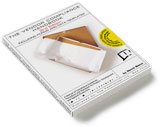Package (Production) |
An arrangement where a contractor agrees to purchase all piece goods and trims, etc., on behalf of the customer, in addition to providing the CMT (Cut, Make and Trim). |
Packing List |
A list prepared by the shipper that lists the quantity and kinds of items being shipped. |
Piece (of Fabric) |
A length of finished fabric in manageable pieces, usually determined by practical manufacturing or production considerations. A bolt or roll of cloth. |
Piece Dye |
Dyeing lengths of cloth for production, usually in solid colors. |
Piece Goods |
Textiles used in the apparel or accessories industry. Production fabric. |
Pile Fabrics |
A group of textiles composed of various fibers ranging from: terry towels, velvet, corduroy, and carpeting. Pile fabrics have a stable, supporting woven or knitted base fabric (ground) and loops formed on the surface that can be left uncut or cut and finished to create a smooth, plush surface. Pile fabrics can be plain, solid colors, fancy patterned or multicolored jacquards. |
Pique |
In knitting, a group of fabrics used in cut-and-sew that combines various simple patterns of “knit” and “tuck” stitches. A typical pique fabric has small bumps of tucked stitches on the face and is smooth on the back. Piques knit fabrics are popular in sports and active wear for their absorbency and wrinkle resistance. |
Plain Weave |
The simplest and most common woven construction (weave) produced on a loom, consisting of warp and weft (filling) threads interlacing in an alternating one-over and one-under arrangement throughout the fabric. Plain weaves can be composed of any fiber and range in weight from chiffon to canvas. |
Plating |
In knitting, the process of knitting two different yarns simultaneously so that one yarn is visible from the surface and the other yarn is carried underneath, directly behind it. This can be done to combine two colors for a mock “heather” effect, to hide a more functional yarn or fiber on the back of the textile (as in a stretch yarn) or to have a “performance” yarn next to the body (for absorbency, wicking, anti-rash, etc.). |
Pleats |
Folds of material included to allow expansion or provide styling features, such as: forward or reverse pleats, knife, box pleats, inverted box, accordion, crystal, Fortuny or sunburst pleats. Some fabrics can be permanently pleated. |
PO |
See: Purchase Order |
Pocketing |
Fabric used for the “bag” or pouch of the pocket. Usually a finer, lighter-weight, sturdy material, not the same as the fashion fabric or shell fabric. |
POD |
See: Proof of Delivery |
Prepaid |
Freight invoice payment term; charges are billed to the shipper or supplier. |
Pre-Production |
All parts of the process leading up to bulk production, includes garments made using the actual production patterns, sewing line and machinery. Pre-Production comes before Top-of-Production. |
Pre-Production (P/P) Sample |
Following the Sales Sample, submittals will be called Pre-Production (P/P) Samples until fit, construction, and all details are approved for bulk. Pre-Production samples should be made in actual fabric and trims, and must be made in the factory where bulk production is being placed. Factory may not proceed with bulk until this sample is approved. |
Pre-Shipment |
Any shipment that leaves the factory or is delivered to a consolidator, port, airport, or distribution center prior to the ex-factory date indicated on the customer’s Purchase Order. |
Pressing |
The act of using heat and/or steam to smooth, shape or form a crease in the fabric or garment. There are a variety of specialized irons, pressing machines, etc., used in manufacturing.
Hard Press - Heavy press, which forms a crisp crease line or durable shaping.
Soft Press - Press to remove undesirable wrinkles, but not to form crisp crease line. |
Printing (Textile) |
The process of applying dyes or pigments to a textile in a pre-determined design or pattern. All commercially produced printed textiles involve a pattern repeated down the length of the fabric and often across the width, as well. The most common types of textile printing are: screen-printing, roller or rotary printing and heat transfer printing. Ink jet printing is also becoming more cost effective for small quantities, but remains very slow.
Wet Printing uses chemical dye stuffs in a paste or ink form that is printed on the surface of the fabric and is then set with steam and/or heat to bond with the fibers. Wet printing does not usually change the hand or drape of the fabric.
Pigment Printing uses colors mixed with a binder (as in paint) and is applied to the surface of the fabric. Without special treatments to the fabrics, pigment printing will affect the hand, weight and stiffness of the fabric. |
Proof of Delivery |
(POD) Proof that shipment was received with signature. |
Prototype
(Proto) |
The initial sample produced for a given design. This can be made in muslin or an available fabric and trims for product development and assessment. |
Punch (Mark) |
A small hole in a pattern piece that will be transferred to the fabric indicating placement of a special sewing detail within the panel of fabric, such as: the apex of a dart, set-on or cut-in pocket placement, pleats, etc. |
Purchase Order |
(PO) A legal, binding contract between a buyer and a supplier. |
| |
|
